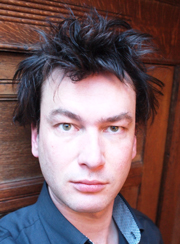
Bright light therapy is an effective treatment for major depression.
Ritsaert Lieverse, psychiatrist and clinical researcher from the team of Witte Hoogendijk and colleagues (e.g. Eus van Someren, Netherlands Institute for Neuroscience; Bernard Uitdehaag, VUmc, Jan Smit, GGZ inGeest) have found that bright light therapy is an effective treatment in major depression symptoms in older adults.
Their paper has just been published in the prestigious Archives of General Psychiatry and has received tremendous attention. The full-length article and its ‘Archival’ eSupplement are accessible via http://archpsyc.ama-assn.org/cgi/content/short/68/1/61. The findings
also have been extensively reviewed and discussed in Time Magazine, and even in the NY Times.

One theory explaining the efficacy is that bright light therapy may act to elevate mood by stimulation of the suprachiasmatic nucleus, the brain’s so called circadian pacemaker. As part of the study, sleep quality, Melatonin levels, urinary cortisol levels, salivary cortisol levels, as well as actigraphy and actigraphical luxometry were measured.
After three weeks of treatment, patients who received bright light therapy had improved 43% on the depression scale, compared with 36% of those assigned to the placebo treatment. Three weeks after treatment stopped, patients were evaluated again.
Remarkably, patients who had received bright light therapy continued to improve, with 54% improvement against 33% in the placebo group. When effects were dichotomized as percentages of people with more than 50% symptom reduction, 58% of subjects were responders versus 36% in the placebo group. These numbers are similar to what is know in studies using antidepressant drugs.
Laboratory findings supported the clinical findings. The dim light melatonin onset curve / gradient was found to be steeper than in placebo, favoring sleeping quality. Moreover, cortisol excretion using 24-hour urine collections showed a normalisation of cortisol hyperextretion which was found at baseline.
These results support inclusion of chronotherapeutic strategies in the treatment options for nonseasonal major depressive disorder in elderly patients. Bright light treatment may provide a viable alternative for patients who refuse, resist, or do not tolerate antidepressant treatment, the team concluded.